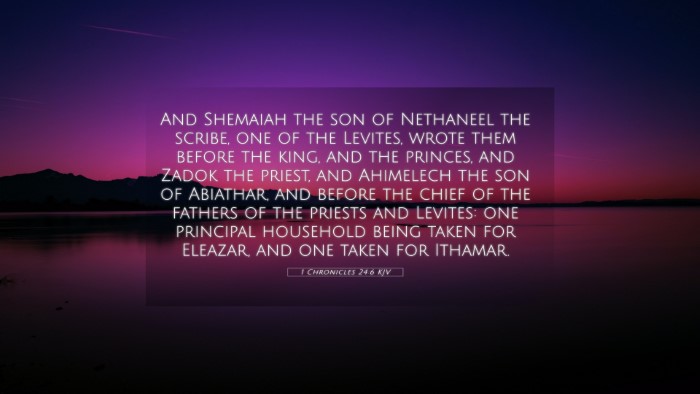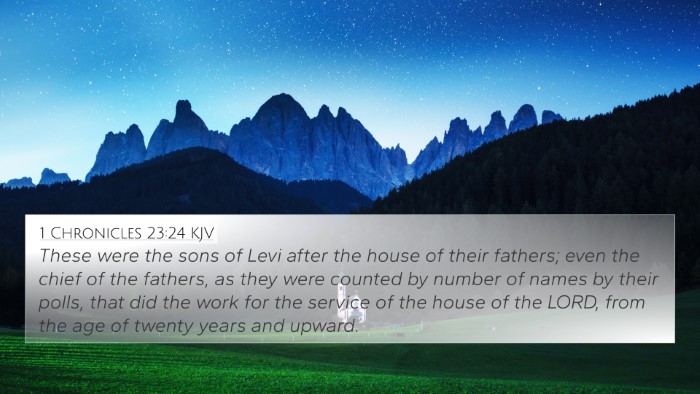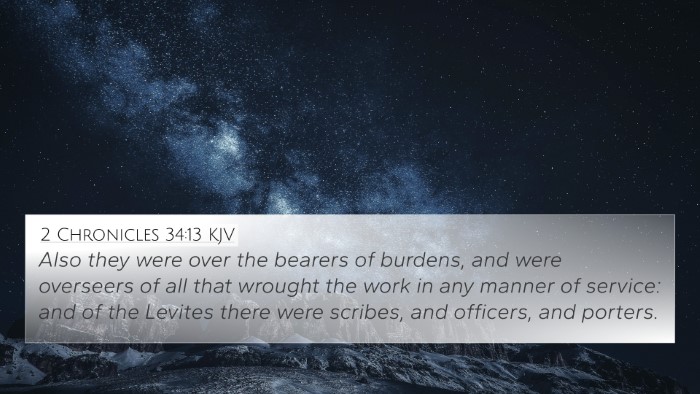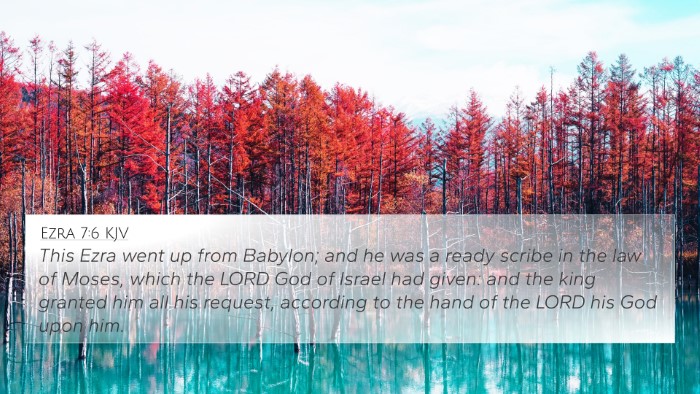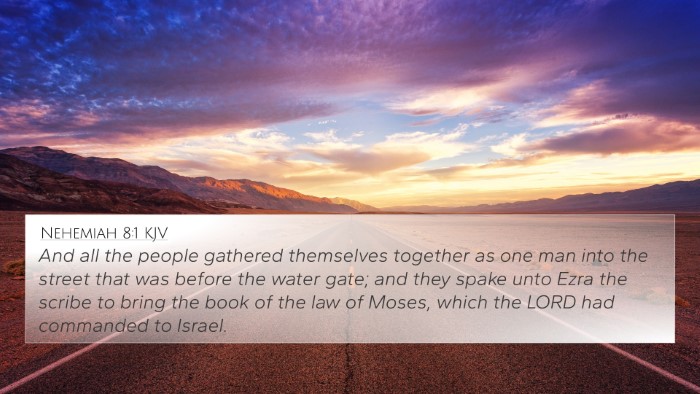Bible Verse Meaning for 1 Chronicles 24:6
This passage is essential for understanding the organization of the Levitical priesthood and their duties within the temple service. It highlights the division of the sons of Aaron as established for their service before the Lord.
Contextual Overview
In 1 Chronicles 24:6, we find a detailed account regarding the organization of the priests, specifically the descendants of Aaron. David, under divine direction, makes necessary arrangements for the maintenance and order of the worship in Israel.
Commentary Insights
Matthew Henry: Henry emphasizes the significance of order in God’s house. He points out that the organization of the priests was not just about roles but also about fostering respect for divine service. Each family was given specific duties, ensuring a continuous and well-structured worship.
Albert Barnes: Barnes elaborates on the implication of this verse for understanding the priestly line. He notes that this detailed arrangement illustrates God’s desire for order in worship and service. The importance of Aaron’s lineage echoes throughout Scripture, reinforcing the notion of a chosen people who serve in specific capacities.
Adam Clarke: Clarke provides a thorough analysis of the verse, commenting on the significance of the division of the priestly responsibilities. He believes this structure was pivotal for the effective and meaningful worship of God, reflecting a broader theme of community and dedication in service.
Spiritual Implications
The arrangement of the priests in 1 Chronicles 24:6 serves as a reminder that God desires order and reverence in our worship. The systematic approach to service can be applied to our lives today, suggesting that serving God should be carried out with intentionality and respect.
Cross-References
- Exodus 28:1: Discusses the appointment of Aaron and his sons as priests.
- Leviticus 10:1-2: Highlights the seriousness of priestly service through the story of Nadab and Abihu.
- Hebrews 7:11-12: Talks about the change in priestly lineage and its significance in the New Covenant.
- Numbers 3:10: God commands the priestly families and their duties in the tabernacle.
- 1 Peter 2:9: Describes believers as a royal priesthood, drawing a parallel to the Levitical duties.
- Luke 1:5-10: Illustrates the priestly duties during the time of Zechariah.
- Acts 6:7: Mentions the growth of the church and the importance of orderly service resembling priestly duties.
Practical Applications
This verse encourages believers to understand the importance of being organized and dedicated in service to God. Just as the priests were called to fulfill their roles carefully, Christians today are also called to serve in their capacities within the church with diligence and order.
Thematic Connections
The themes of order and service in worship are echoed throughout the Bible. The organization of the priests can be seen in parallel with other forms of service, from the leadership structures in the church (Titus 1:5) to the call for Christians to offer themselves as living sacrifices (Romans 12:1).
Conclusion
The verse 1 Chronicles 24:6 is rich with meaning and implications for understanding both the historical context of the Israelites' worship practices and for contemporary Christian life. It provides a clear model for service that remains relevant and necessary in a community of faith today.

